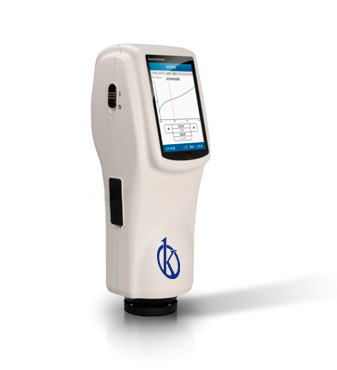Spectrophotometry is a revolutionary advance in the field of laboratory understanding. This technique has been developed as a useful tool for the chemical analysis of solid, liquid and gaseous samples. This technology is designed to detect, measure and relate certain properties of light that can be used to identify a chemical substance.
Underlying it is spectroscopy, which refers to any technique that uses light to identify materials and analyze their composition. Spectrophotometry offers numerous advantages, including greater accuracy in determining the results of an analysis and decreased analysis times. In addition, it is a technique available in almost all laboratories, so it is pertinent to understand all the possibilities it offers.
What does spectrophotometry provide in chemical analysis laboratories?
Spectrophotometry can be used to detect a variety of chemical compounds, from simple elements such as chlorine and magnesium, to complex organic compounds. This tool has been developed to be able to detect very tiny amounts of a chemical compound, a skill that is useful to use in a laboratory.
The results of this type of analysis can be plotted, helping scientists see if there is an interference in the results. Some of the basic instruments needed for spectrophotometry tests are a device for measuring the light spectrum (a spectrophotometer), a light source, a dosimeter, and an absorbable column.
Current instrument designs incorporate radiation sources such as deuterium lamps for the UV, and tungsten and xenon arc lamps for the visible region of the spectrum. Liquid samples are placed in plastic, glass, or quartz tanks. On the other hand, radiation is separated into its components by wavelength selectors such as filters or monochromators. Then the radiation is detected with solid-state detectors or photomultiplier tubes. In general, instrument designs are single beam, double beam and multi-channel type.
Why is spectrophotometry important?
In addition, spectrophotometry can be used to measure the purity of chemicals, to determine the total content of compounds in a sample, and to measure levels of environmental contaminants. This technique can also be used to detect chlorine, magnesium and phosphorus content in wastewater. In short, it allows the study of organic and inorganic species at very low concentrations, which helps to control very effectively the levels of these substances before they put at risk the chemical balance of ecosystems.
This tool is also very important for the pharmaceutical area, as it can be used to determine the exact amount of active ingredient present in a pharmaceutical product. Spectrophotometry can be used to identify the content of metabolites in a drug, to measure the percentage of active substance in a drug preparation, and to verify and monitor the quality and stability of a drug. This tool can also be used to diagnose diseases, such as cancer and pregnancy testing, by identifying specific metabolites in blood samples.
Spectrophotometry has opened a new world of understanding for laboratories. This revolutionary technology offers many advantages and the ability to perform analysis faster and more accurately than ever before. This tool is extremely useful for various industries, including pharmaceutical, environmental and food. Scientists are choosing to use this technique to obtain more accurate and reliable results. Spectrophotometry is offering a new dimension for chemical analysis in laboratories.
The solutions in spectrophotometry of the manufacturer Kalstein
Kalstein has high quality spectrophotometers on sale. With this equipment the UV-visible spectrum of substances can be obtained, with a low noise level and with an instrumental bandwidth of 2 nm. For further technical details of these devices, and other information such as purchase and pricing, please contact HERE and HERE.

